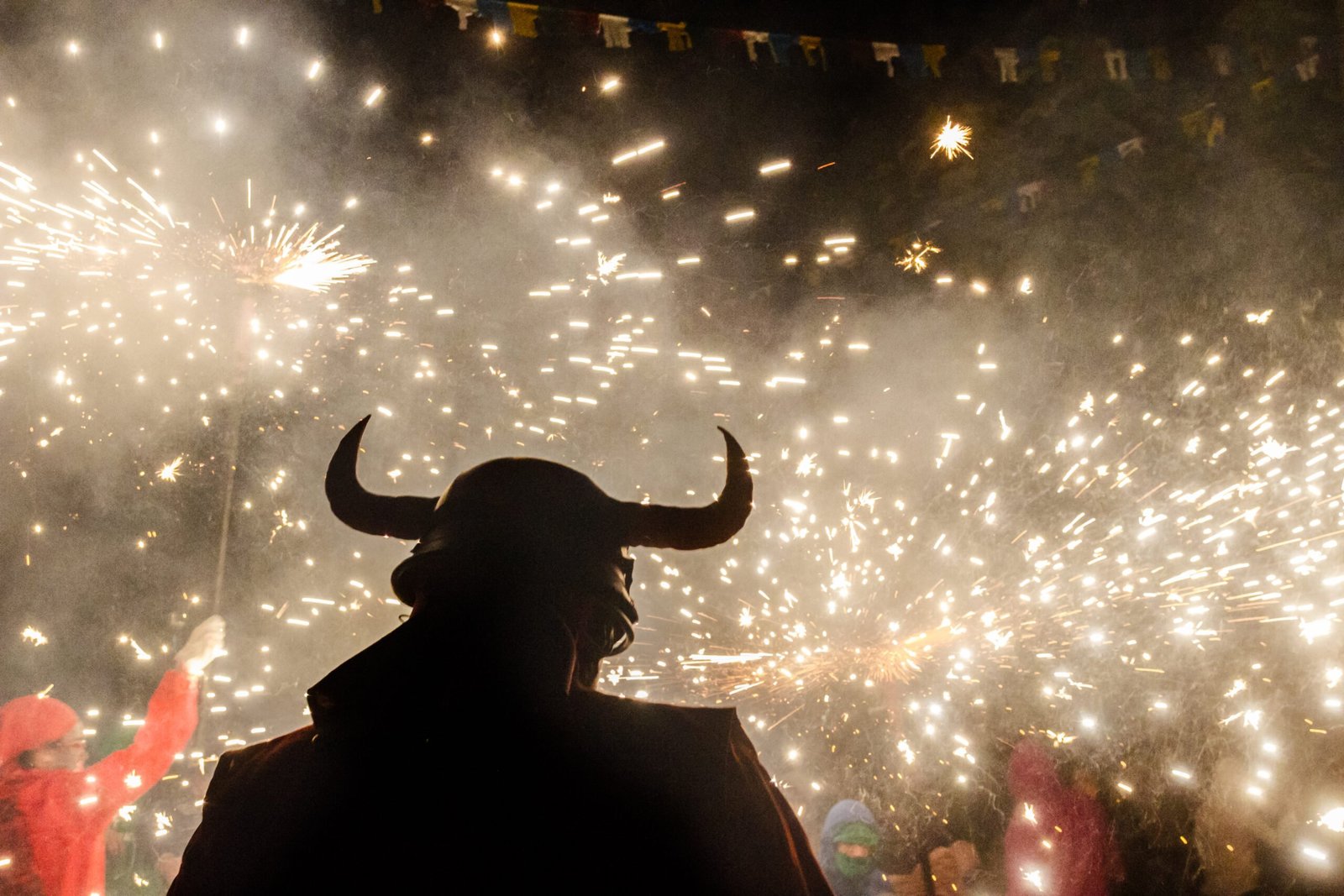Sant Antoni is arguably the biggest and most important holiday unique to Mallorca. Despite having just finished Christmas not two weeks before, Mallorcans hit the streets and squares again. The trains run late into the night on a special schedule. Demons run wild in the street.
With the Feast of Sant Antoni taking place on January 17 and most of the festivities happening the night before on the 16th, Sant Antoni is fundamental to Mallorcan culture. It’s even the origin of the Mallorcan soccer team’s mascot: Demons.
There’s no better way to experience Mallorcan culture than celebrating Sant Antoni with the people, so here’s your guide on how to do just that. That’s why we could not miss it at Mallorqueta.
The Origins of Sant Antoni
Saint Anthony (Antoni) was a Christian monk who lived in Egypt in the Third Century. He became revered because he lived an ascetic lifestyle as a swineherd, forgoing earthly pleasures in favor of devotion to God. As the story goes, he was frequently tempted and even attacked by demons in the desert where he lived. He was able to resist them through the power of prayer. He became an example for future ascetics, thus earning him the title of “Father of Monks.”
Because Saint Anthony is the patron saint of animals and farmers, many rural towns in Mallorca – such as Sa Pobla and Manacor – adopted him as their patron saint. As early as the Middle Ages, farmers would bring their animals into town for the local priest to bless them, a tradition known as Beneïdes that still continues to this day.
Eventually, this came to involve an entire festival, since many would gather in the town the night before. Naturally, the celebration had to involve the demons that play such a prominent role in the story of Saint Anthony. As these festivities became more and more popular around the island, demons came to take part in many Mallorcan celebrations and represent the island itself. Still, they ultimately trace their roots back to the story of Sant Antoni.
Typical Sant Antoni Traditions
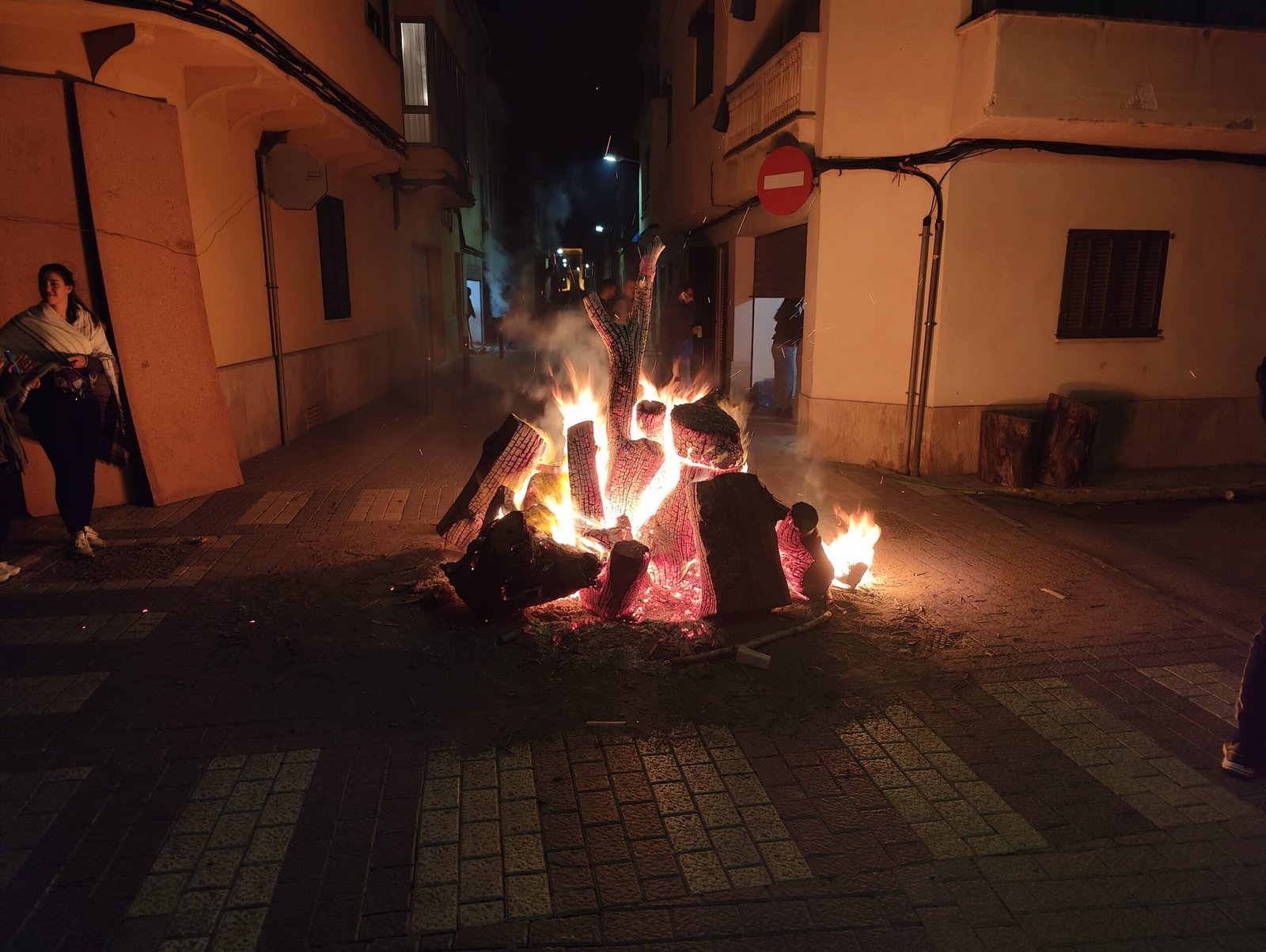
Foguerons
Fogueron basically means “bonfire” in Spanish. On the eve of Sant Antoni, that is to say, the night of January 16, groups of neighbors, local organizations, schools, town halls, etc. (even in towns that don’t officially have a bank holiday for Sant Antoni) build large bonfires in the streets and squares.
While some of these are private, most welcome anyone to come barbecue their own food on the fire (most traditionally bread with sobrassada and botifarró) and socialize.
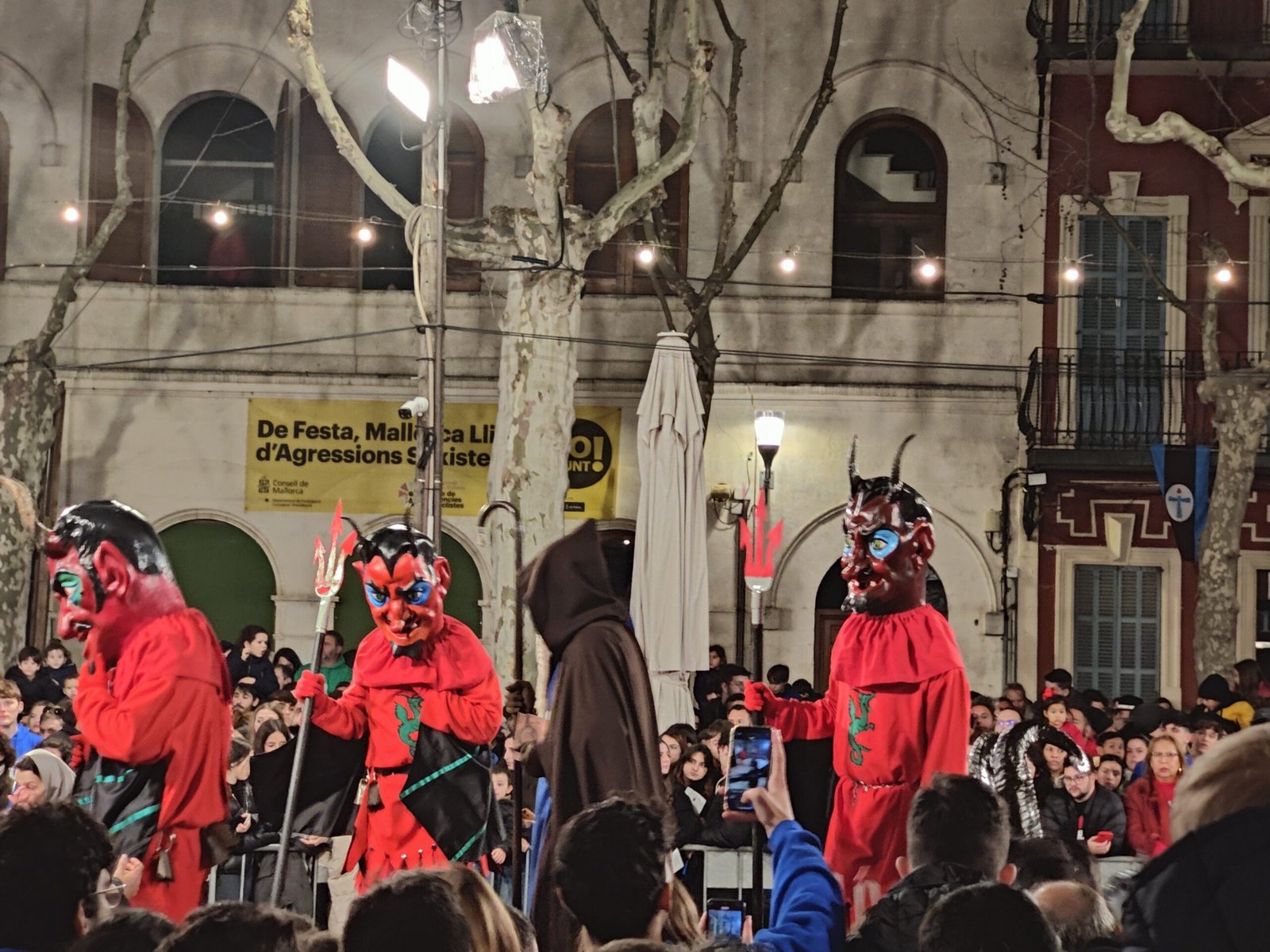
Dimonis
Demons (‘dimonis‘ in Catalan) are widely associated with Mallorca in general, but they originated with the Feast of Sant Antoni since Saint Anthony was tempted by demons in the wilderness. On the night of January 16, official groups (collas) of dimonis dress up in their demon outfits, mount instruments, and run around town with pitchforks, playing impressive songs on the drums, dancing around the bonfires, spinning correfocs, and sometimes even blowing fire from their mouths.
Important to note is that each town in Mallorca has its own design of demon and outfit particular to its colla. Oftentimes, a town’s demon will have a name and act as a mascot for the town. These are often pictured on t-shirts, posters, and postcards.
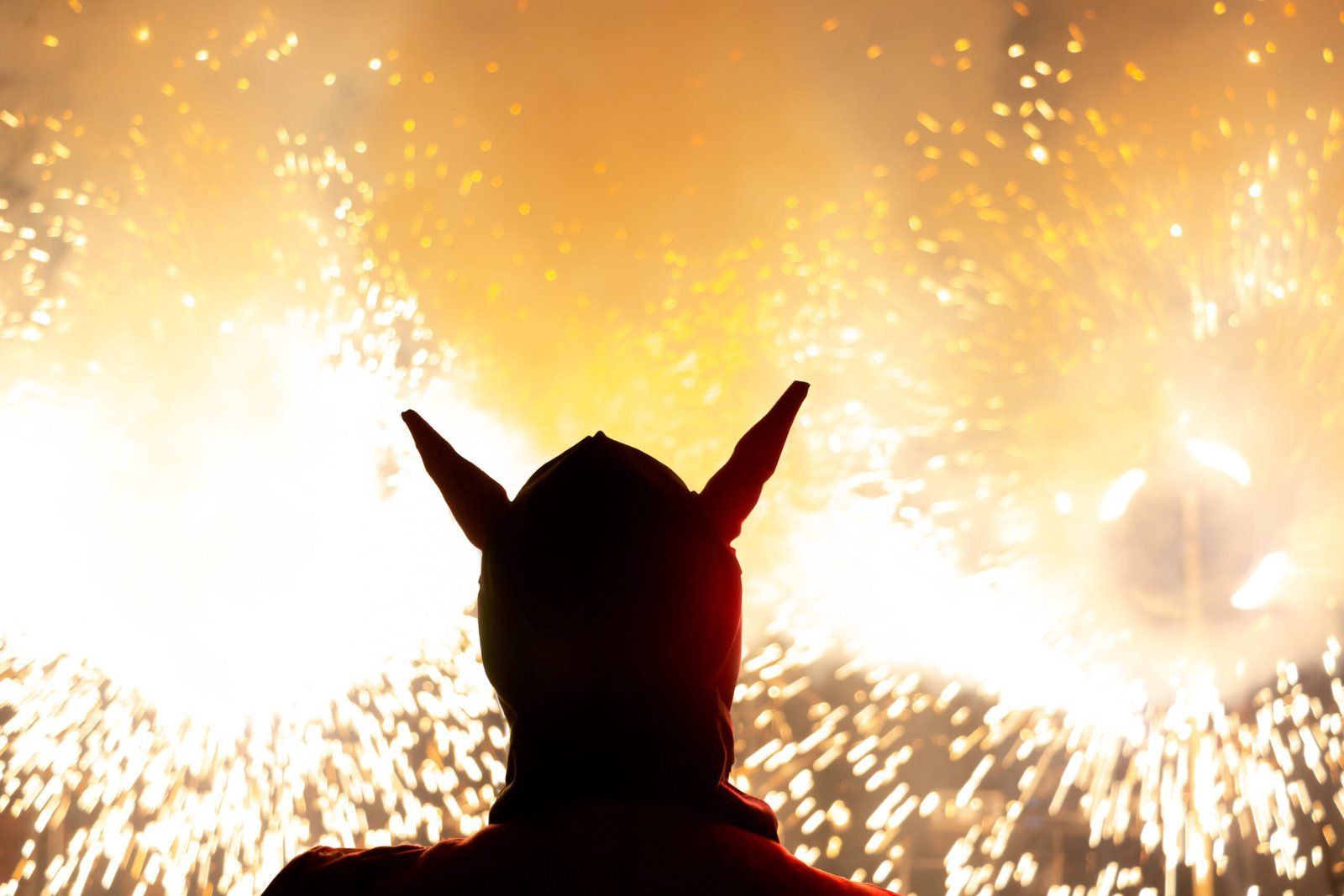
Correfocs
A carrefoc is like a giant firework sparkler. Really, it’s several sparkers attached to a pole or pitchfork, which members of the collas, usually those dressed as demons, spin around in a loud and brilliant display.
Espinagades
An espinagada is like an empanada of pork or eel along with various vegetables. In Sa Pobla, they’re made in large batches for Sant Antoni and sold on the street.
Gigants and Caparots
Giants (‘gigants‘ in Catalan) and caparots (the big heads) are a major part of Mallorcan culture, so it’s no surprise they show their faces at Sant Antoni celebrations. This is far from the only time they come out, but towns with major Sant Antoni festivities like Sa Pobla have events that include gigants and caparots dancing and parading through the streets.
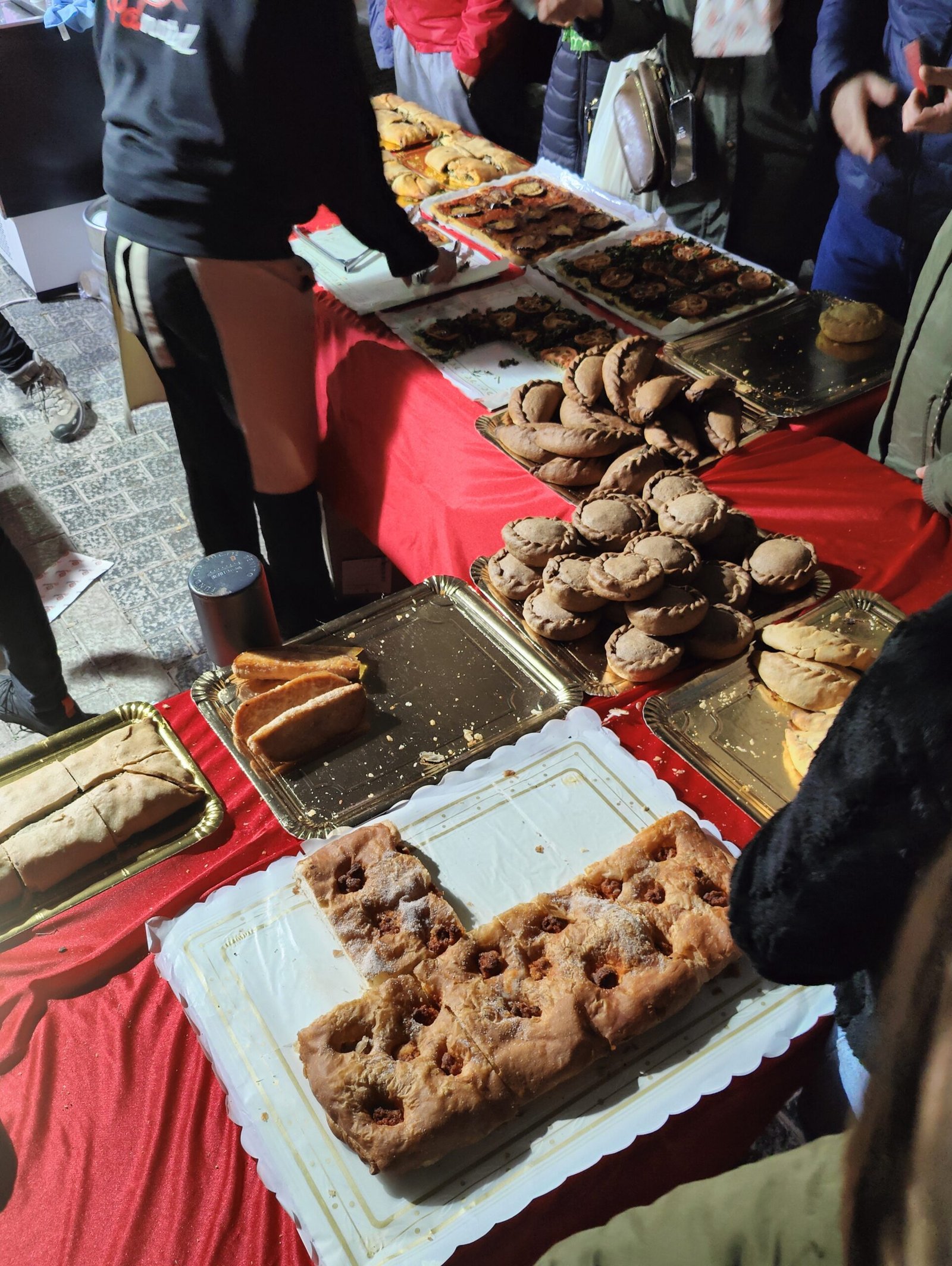
U Pi de Pollença
The town of Pollença has a particularly interesting tradition, though it takes place on the 17th itself rather than the night of the 16th. A tall pine tree trunk with the branches and bark stripped off is placed in the center of the town square. It measures between 65 and 80 feet (20-24 meters). Starting at 2 pm, young people, usually men, attempt to climb up the trunk to reach a rooster with a bag of confetti placed at the top.
Beneïdes
The Beneïdes take place on January 17 itself. Farmers bring their animals into town to the local church to have them blessed by the priest, since Saint Anthony is the patron saint of animals and farmers.
Where Do They Celebrate Sant Antoni?
Because Palma celebrates their patron saint Sant Sebastià the same week, Sant Antoni celebrations are less common there. However, you can still expect to see correfocs and dimonis at the Sant Sebastià festivities. Sant Antoni is a holiday celebrated mostly in the Mallorcan towns outside of the city. Even in towns where Sant Antoni isn’t the patron saint and January 17 isn’t a bank holiday, the people still celebrate the night of the 16th with foguerons and dimonis.
Nevertheless, the places with the biggest celebrations are also those where Sant Antoni is the town’s patron saint and it’s an official holiday on the 17th. These include:
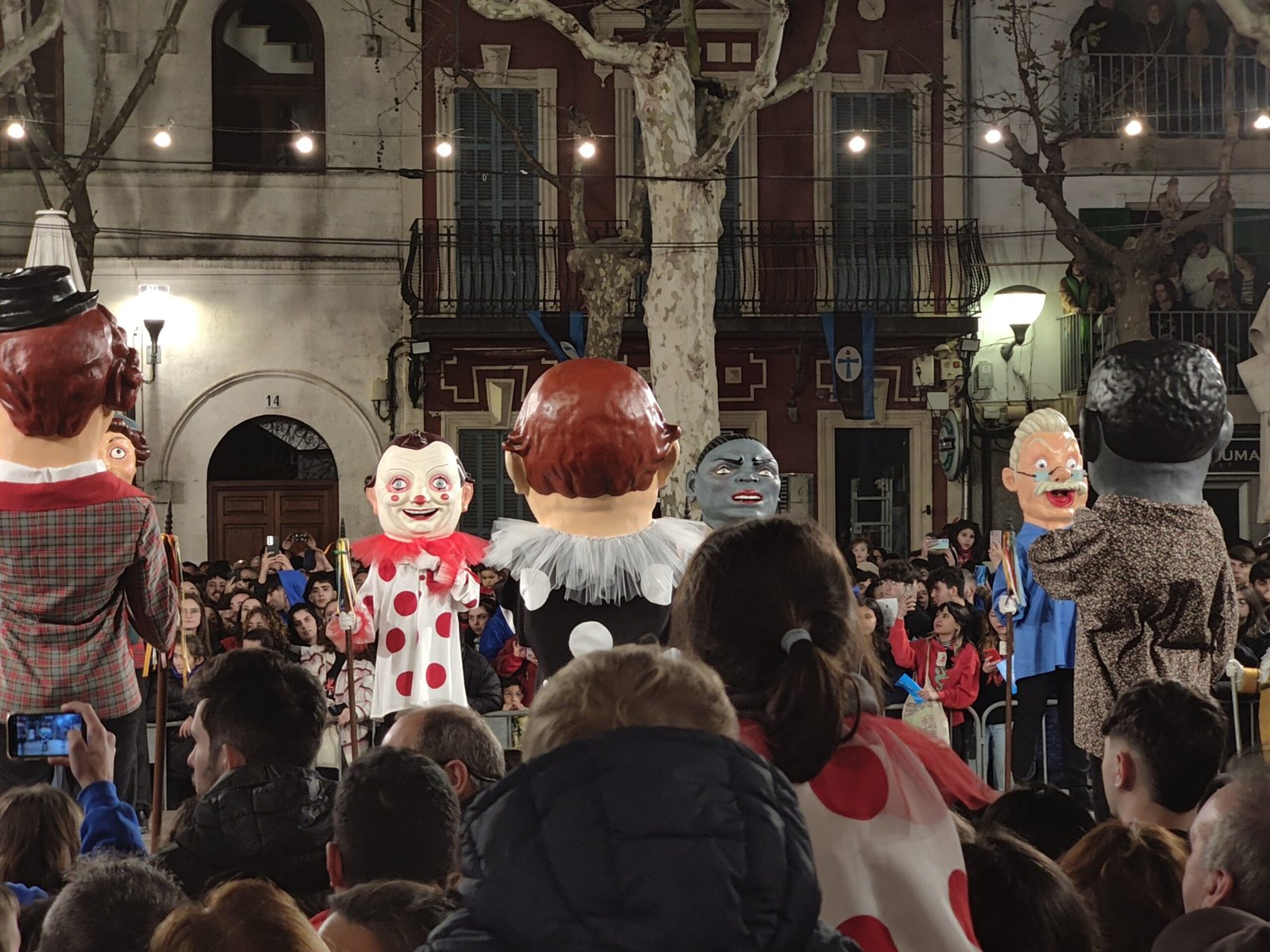
Sant Antoni 2025
Sant Antoni Celebrations in Sa Pobla
I always recommend going to Sa Pobla on the night of the 16th, which is Thursday this year. There are events basically all day on the 16th and 17th, but the most exciting parts including the foguerons, demons and fireworks start at about 9 pm. The entire schedule can be found on the Sa Pobla town hall’s website and in the embedded PDF below, but here are the main events:
| Event | Time, Date | Place |
| Dance of the dimonis, caparrots and gigants | 9:15 pm, Jan 16 | Plaça Major, Sa Pobla |
| Fireworks show and music | 9:45 pm, Jan 16 | Plaça Major, Sa Pobla |
| Ximbombada and Glosada | 12:30 am, Jan 17 | Plaça Major and Plaça d’Alexandre, Sa Pobla |
| Beneïdes, blessing of the animals | 4:30 pm, Jan 17 | Sa Pobla church |
TIB has also stated that they will run additional trains between Palma and Sa Pobla throughout the night of the 16th to assist people travelling to and from the festivities.
Sa Pobla’s Official 2025 Sant Antoni Program
Sant Antoni Celebrations in Manacor
For a more alternative crowd, Manacor is the town to celebrate in. Just like in Sa Pobla, there are events all day on the 16th and 17th, with the fogufoerons, demons and fireworks start at about 8 pm on the 16th. The entire schedule can be found inside the official program in the embedded PDF below, but here are the main events:
| Event | Time, Date | Place |
| The first fogueron is officially lit, and the celebrations with dimonis and dancing begin! | 8:00 pm, Jan 16 | La Rectoria, Manacor |
| Ball de Bot (traditional dancing) with the Galivança group | 10:00 pm, Jan 16 | Plaça de Ramón Llull, Manacor |
| Beneïdes, blessing of the animals | 11:00 am, Jan 17 | The procession will march along Av. de Baix des Cós, c/ de la Mare de Déu de les Neus, Plaça de Ramón Llull, Via de Portugal, and c/ del Dos de Maig. Manacor. |
| Last dance of the demons | 8:00 pm, Jan 17 | Plaça de sa Bassa, Manacor |
TIB has also stated that they will run additional trains between Palma and Manacor throughout the night of the 16th to assist people travelling to and from the festivities.
Manacor’s Official 2025 Sant Antoni Program
Sant Antoni Celebrations in Artà
For those wanting to stay away from the larger crowds that gather in Sa Pobla and Manacor, yet still enjoy some barbecuing and the fiery celebrations of Sant Antoni, a trip to Artà is a great alternative. Although a smaller crowd, the residents of Artà throw quite the celebration for their patron saint, with foguerons scattered throughout the village. The entire schedule can be found on the town hall website, but here are the main events:
| Event | Time, Date | Place |
| The demons invade the streets | 9:00 am, Jan 16 | Throughout the village of Artà |
| The foguerons can officially be lit! | 7:30 pm, Jan 16 | Throughout the village of Artà |
| Sant Antoni parade | 11:00 am, Jan 17 | The procession will march throughout the village. Consult the town hall website for route and times. |
Sant Antoni Celebrations in Pollença
Perhaps one of the most unique Sant Antoni celebrations, featuring U Pi (the pine tree), takes place in the northern town of Pollença on the Saint’s day itself, the 17th. However, the celebrations leading up to this annual tree-climbing frenzy do not come up short in the typical festivities of foguerons, dimonis, and correfocs. On the evening of the 16th, you can explore the town’s streets filled with foguerons and watch an exciting show of dimonis dancing around the fires. The entire official program can be found on Pollença’s town hall website and inside the embedded PDF below, but here are the main events:
| Event | Time, Date | Place |
| Fogueron competition begins | 6:00 pm, Jan 16 | Throughout the streets of Pollença |
| Lighting of the foguerons accompanied by the dimonis of Ca de Bou | 9:00 pm, Jan 16 | Throughout the streets of Pollença |
| Beneïdes, blessing of the animals | 10:00 am, Jan 17 | Pollença |
| Departure to Ternelles to fetch the pine tree, accompanied by the Xeremiers Orats and the xeremiers (pipers) of Font del Gall | 11:30 am, Jan 17 | Departure from the Almoina, Pollença |
| Lunch at Ternelles (bring your own plate and cup) | 12:30 pm, Jan 17 | Ternelles, Pollença |
| Departure of the pine from Ternelles to the center, where the climbing competition takes place | 2:00 pm, Jan 17 | Ternelles, Pollença |

